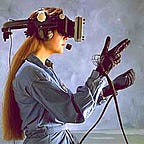Designing Future Environments With Biomimicry
Designs from Earth to help us in Space
When we look up into the sky at night today, there is more knowledge than ever before of what exists out there. We have identified locations were we might go, and expand our civilization. We have pictures, and maps, and calculations, yet it’s been decades since anyone touched foot on a surface other than our own earth. The memory of Man on the Moon exists in a limbo between distant past, and future aspiration.
That fact alone has inspired the beginnings of a New Space Age. There are more people and resources than ever before, which are dedicated to seeking out other potential bases, and ways to create life-sustaining habitats. Mars is a top contender, with plans from SpaceX to colonize within the next 20 years. These ambitious goals come with many obstacles to overcome, and hugely challenging problems to solve along the way.
The higher we reach, the closer to home we may need to look for answers. There are clues and blueprints all around us in Life on Earth. This is where biomimicry comes in.
As a civilization, we’ve spent so many years creating in ways that have reduced our natural resources, which is in direct contradiction to the nature of Life itself: life creates conditions conducive to life. And so, as we embark on a mission to create new worlds for ourselves, we have an opportunity to try a different approach. Taking insipration from the natural world around us by looking for organisms who have already learned, through millennia of R&D, how to solve the challenges we face. The answers are there for the taking.
“Those who are inspired by a model other than Nature, a mistress above all masters, are laboring in vain.”
-Leonardo DaVinci
The practice of Biomimicry has been applied to some existing problem solving efforts in the space program, and has the potential to play an even greater role. Here are some examples:
1
“I think one of the most aggravating, restricting facets of lunar surface exploration is the dust and its adherence to everything no matter what kind of material, whether it be skin, suit material, metal, no matter what it be and its restrictive, friction-like action to everything it gets on.” — Apollo 17 Commander Eugene Cernan during the Apollo 17 Technical Crew Debriefing.
2
“At the core of ecological resiliency is its ability to have multiple stable states. If designers and decision makers can create the conditions conducive to multiple successful states rather than reductionist planning that identifies the “best” plan, chances are the right strategies will emerge.”
“Because the cognitive, behavioral and health benefits of access to nature have been scientifically proven, communities and cities should take advantage of the growing number of quantifiable services provided by nature. These services should be pondered in relation to their resilient, regenerative and livable attributes, as well.”
3
“The more powerful our technology gets, the deeper we can see into nature. As greater detail is revealed, more tantalizing solutions to engineering problems present themselves. Scientists who look to nature for solutions to engineering and design problems are reaping the rewards, and are making headway in several areas related to space exploration.”
The DelFly Explorer from the Delft University of Technology is one intriguing design of flapping-wing MAV. Its small and lightweight stereo vision system allows it to avoid obstacles and maintain its altitude on its own.
4
Biomimicry in textiles: past, present and potential. An overview
“For many reasons, textiles provide unique opportunities to emulate nature. The building blocks of every textile structure at the lowest level of hierarchy (nano to micro) are organic fibres, and many of these are natural. In addition, like many natural functional surfaces, the large surface area of fibrous textiles offers tremendous opportunities to functionalize them. All of these attributes lend textiles more to biomimetic concepts than others.”
…
“Understanding the structure–function relationships is key in developing textile products that are, for example, adaptive, thermo-resistant, superhydrophobic, or self-healing, examples of which are plentiful in nature. The obvious need for sustainability requires not just mimicking natural design but also the process.”
By looking more closely at the Earth, we can find a way to accelerate our next steps into the stars.
If you found this interesting, give us a shout out & share it with your followers/friends/colleagues! And take some time today to learn more about the nature you move through every day.
Learn more about FAAR
Sign up for Essential News for the New Space Age
